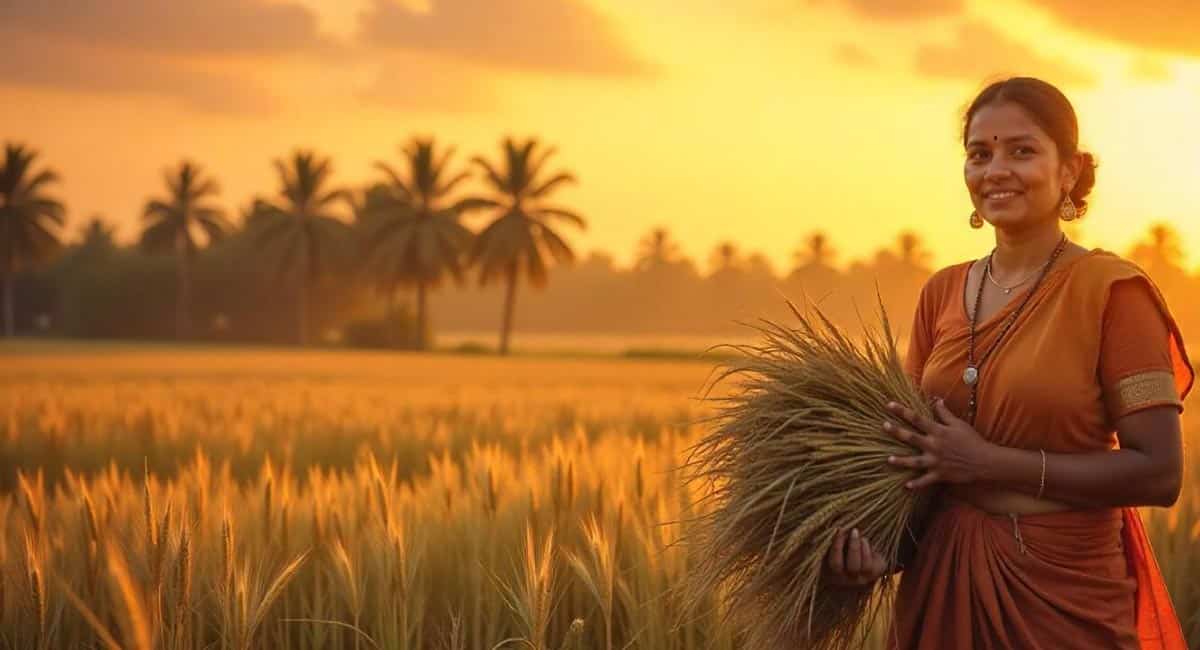Odisha Millet Mission: Growing Health, Hope, and Harvests
In a world progressively facing the challenges of climate change, food insecurity, and nutritional deficiencies, traditional crops are making a much-needed comeback. Among these, millets — the ancient grains once a staple in Indian diets — are reclaiming their place of importance. Leading this revival is the Odisha Millet Mission, a pioneering initiative that has attracted attention both nationally and internationally. Let’s delve deeper into what the Odisha Millet Mission is, its significance, and how it is transforming lives across the state.
What is the Odisha Millet Mission?
Launched in 2017 by the Department of Agriculture and Farmers’ Empowerment, Government of Odisha, the Odisha Millet Mission (OMM) aims to revive the cultivation and consumption of millets in the state. It is a unique, farmer-centric initiative that focuses on promoting millets not just as a crop but also as a valuable part of the local diet and economy.
Initially rolled out in 30 blocks across 7 districts, the program has now expanded to over 143 blocks in 19 districts, benefiting thousands of tribal and smallholder farmers. The mission’s ultimate goal is to improve household nutrition, enhance farmer incomes, and build climate-resilient agricultural practices.
Unlike many top-down government schemes, OMM is notable for its participatory approach, which involves farmers, local NGOs, community-based organizations, researchers, and government officials working together in a collaborative effort.
Why Millets?
People often refer to millets as ‘nutri-cereals’ — and for good reason. These small-seeded grains, including varieties such as ragi (finger millet), bajra (pearl millet), foxtail millet, little millet, and kodo millet, are rich in nutrients. They are a great diet to combat malnutrition since they are high in protein, fiber, iron, calcium, and vital amino acids.
Beyond their nutritional benefits, millets are highly resilient crops. They require far less water than rice or wheat, grow well in poor soils, and have a natural resistance to pests and diseases. In an era where climate variability is a growing concern, millets represent a sustainable and climate-smart agricultural choice.
Historically, Odisha’s tribal communities heavily relied on millets for food security. However, over the decades, with the push towards rice and wheat under the Green Revolution, the cultivation and consumption of millet sharply declined. The Odisha Millet Mission seeks to reverse this trend.
Key Objectives of the Odisha Millet Mission
The mission adopts a holistic approach and actively pursues several clear objectives:
- Increasing Millet Production: By providing quality seeds, training farmers in improved agronomic practices, and supporting organic farming techniques, the mission aims to boost millet cultivation.
- Improving Processing and Value Addition: One of the challenges with millets is their labor-intensive processing. OMM supports small-scale processing units, making it easier for farmers and consumers.
- Promoting Consumption: Efforts are underway to reintroduce millets into daily diets through public distribution systems (PDS), mid-day meal schemes in schools, and awareness campaigns.
- Market Linkages: Farmers are supported in accessing fair markets for their produce, ensuring they get a better price and sustained income.
- Research and Innovation: The program encourages research into high-yielding, drought-resistant millet varieties and best practices in organic millet farming.
How Odisha Millet Mission is Making a Difference?
The Odisha Millet Mission has already started showing promising results:
- Increased Cultivation Area: The area under millet cultivation has steadily increased year on year, reversing decades of decline.
- Higher Farmer Incomes: Farmers involved in millet cultivation under OMM report better profits due to lower input costs and higher market prices.
- Nutritional Gains: Mid-day meal programs are incorporating millets, thereby improving children’s dietary levels in rural areas.
- Women’s Empowerment: Women’s self-help groups (SHGs) have played a key role in the processing, value addition, and marketing of millets.
- Sustainability: As millets require less water and fewer chemicals, farming practices are becoming more environmentally friendly.
Perhaps most importantly, there is a renewed sense of pride among tribal farmers about their traditional crops and farming knowledge.
Success Stories from the Ground
In districts like Kandhamal, Koraput, and Rayagada, once struggling farmers are now flourishing thanks to the Odisha Millet Mission. Farmers like Basanti Majhi from Kalahandi district, who previously relied solely on rain-fed rice farming, have diversified into millet cultivation, experiencing significant improvements in their household income.
Several farmer producer organizations (FPOs) collectively market millets, strengthen bargaining power, and reduce exploitation by middlemen. These FPOs are now branding and selling millet products in urban markets under names like ‘Mandia Magic’ and ‘Desi Millets’.
Challenges and the Road Ahead
Despite the many successes, the Odisha Millet Mission also faces challenges. Consumer preference for rice and wheat remains strong in many regions. Processing technology for millets is still evolving and needs further innovation to become fully scalable.
Moreover, millet farmers require continuous support to ensure that cultivation remains profitable. There is also a need to create greater awareness among urban consumers about the health benefits of millets, thereby expanding demand.
Looking ahead, the Odisha government is exploring partnerships with private players, startups, and international agencies to take the Millet Mission to new heights. Odisha has an excellent opportunity to become a global leader in millet production and innovation, given the central government’s emphasis on the grain, which has even proclaimed 2023 as the International Year of Millets.
Final Thoughts
The Odisha Millet Mission is more than just an agricultural program — it’s a movement towards sustainability, nutrition, and rural empowerment. By reviving millets, Odisha is not only preserving its rich agrarian heritage but also offering a resilient solution for future food security. As awareness grows and more farmers and consumers embrace these “smart foods,” the humble millet could well become the grain of hope for generations to come.


